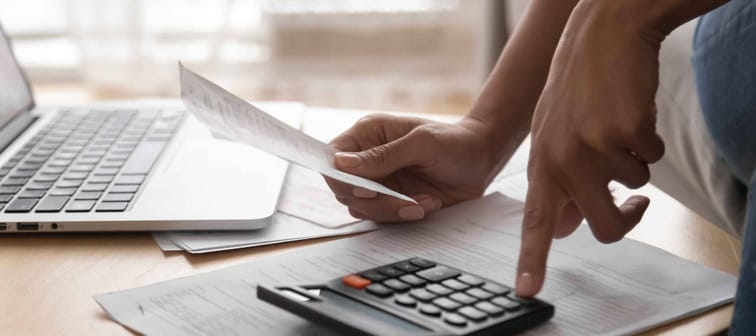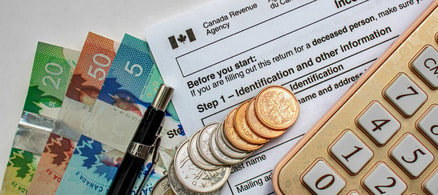If you regularly contribute to your RRSPs and you also regularly donate in the form of a pre-authorized contribution plan (like I have for my TD e-series funds), you regularly donate to charities or pay for child care costs, you can choose to forgo the big tax return at the end of the year and just get a bigger pay cheque bi-weekly or monthly or whenever you get paid.
Most people would want to get a bigger pay cheque because otherwise, you are giving an interest-free loan to the government (the government already takes so much, why would we want to give them even more?). If they give you a loan (e.g. if you over-contributed to your TFSA) they ding you like heck, but when they do it to us, they just turn their back. Sigh… C’est la vie 🙁
If you are interested in getting less taxes dinged on each pay cheque, here are the steps you need to take in order to do so:
-Make sure you have all the slips and receipts etc. for your child care costs or your charitable donations that you regularly make, employment expenses you would normally fill out on your T777, interest expenses on investment loans, and even rental losses. -Find out who your human resources/ payroll deductible person at your place of work is because you will have to give the CRA their contact information and they can set it up through payroll to deduct less taxes from your paycheque -Fill out that T1213 form and send it in along with the documentation and send it to CRA -Et voila, you will get fewer taxes taken off your paycheque in a few weeks to months
The reasons why I’m not filling out the T1213:
I think this is a great way to get taxed less throughout the year, but to be honest (and feel free to judge me haha), I really enjoy my big tax refund at the end of the year. I’m not sure why, perhaps it’s some sort of psychological defect of mine. I like to plan how I spend the big tax refund and I like how I can use it to fill up my TFSA contribution room or to fill up my RRSP room for next year. I know that if I got a bigger pay cheque throughout the year, despite my automatic ‘pay myself first’ deductions, I know I would be tempted to adjust things and adjust my budget, and I probably would contribute less to my TFSA and RRSPs (heck, it’s human nature, I suppose).
Another reason is because I’m afraid of commitment. Although I have been contributing regularly to my pre-authorized payment plan for my RRSP for years, I like the idea of just stopping it if need be (or if life gets in the way of my regular contributions)… without having to fill out more paperwork or talking to the human resources person again, or being on hold on the phone with the Canada Revenue Agency for eons.
Finally, because I get a lot of investment income slips, it can be unpredictable as to what my interest income is for the year, or my capital gains etc. I don’t want to have to pay the Canada Revenue Agency for this and with the RRSP deduction, it would be a good buffer for all of this non-employment income I get, so I can avoid (God forbid) having to OWE the Canada Revenue Agency come tax time.
So my dear government, enjoy your interest-free loan courtesy of me…for now. I know I’m not being financially smart or prudent with this decision, but that’s what personal finance is about, right? It’s personal 🙂 What works for me may not work for others.
Update for 2017 While the T1213 form and process have remained largely the same since I wrote this article, my thought process and investing style have changed significantly. Back in the day I preferred getting the large refund cheque all at once because it forced a savings strategy on me, but these days, with my automated contribution to Wealthsimple (the Canadian robo advisor I started with earlier this year) I have found a different way to guarantee that my savings and investment goals stay on track. Now I prefer to keep my earned money in my pocket and invest it ASAP! After all, the longer it is in there, the more time it has to grow right? I have kept my account with Questrade as well, and enjoy watching that account grow and evolve. (I’ve now switched to a basic two-ETF couch potato solution as opposed to my old dividend-investing ways.) I still think that the majority of Canadians would be better off getting the large chunk of money all at once – and then making the decision to invest it all before they spend it (in other words – forced savings) is the better strategy given how spendy the average Canadian is. However, as long as you have an easy-to-execute plan that you know you can stick to, getting your money into your investment account or online bank as soon as possible is a smart path to take.
Readers, do you use the T1213 form? I wonder what the percentage of Canadians that reduce their income taxes is, by this method? Can you list any other pros or cons for the T1213 form completion? Do you enjoy the big tax refund at the end of the year like me, or are you more pragmatic?





